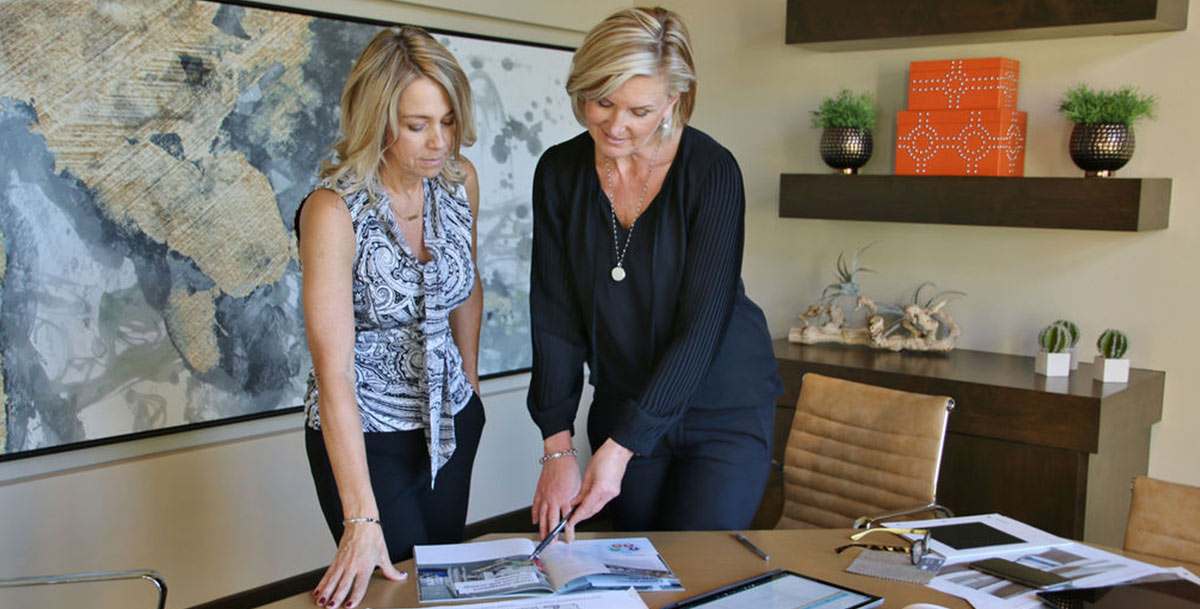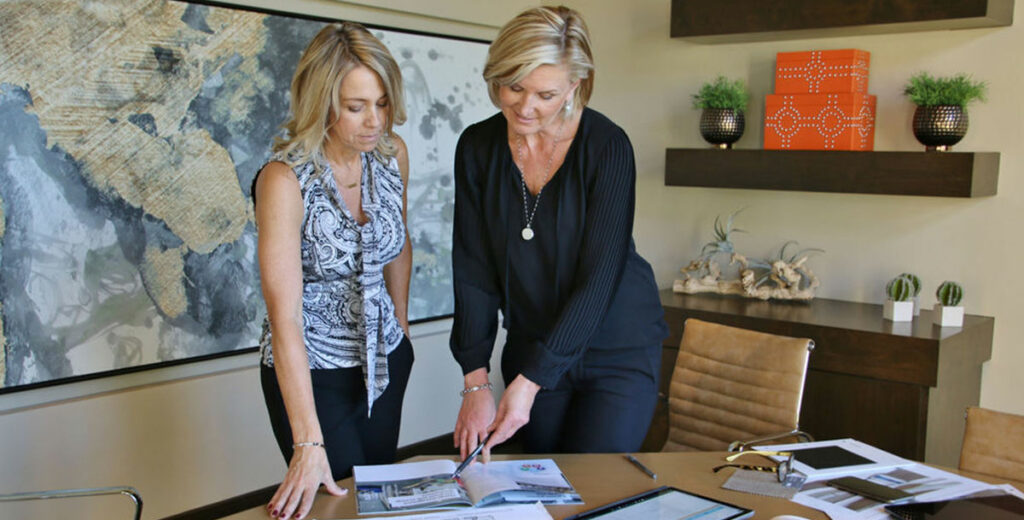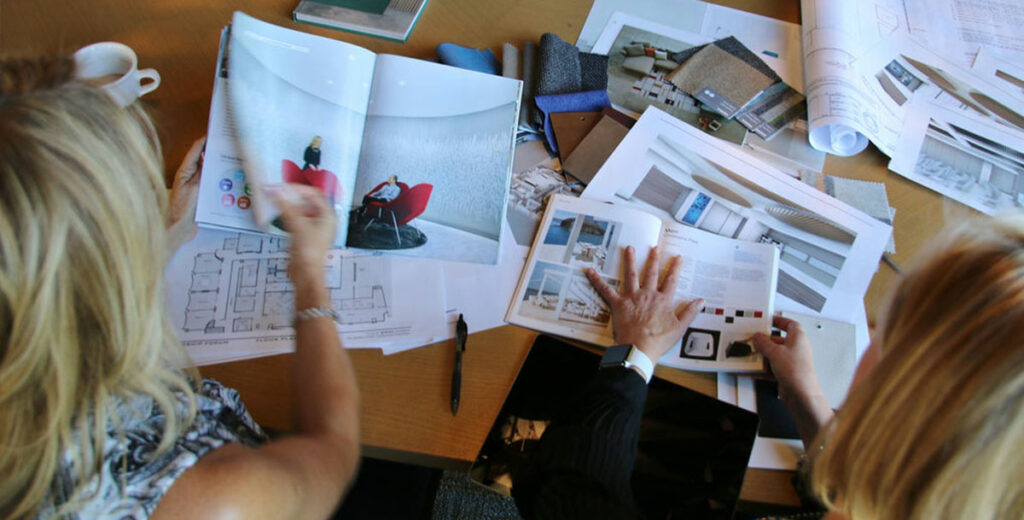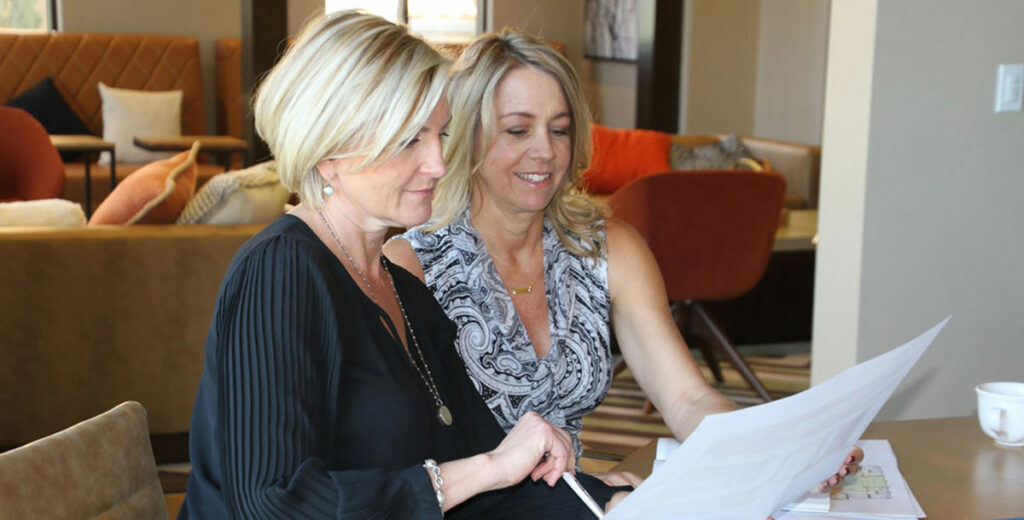
22 Nov Workspace Programming 101: Five Questions with HuddleHQ
We sat down with HuddleHQ co-founders Tammy Kosloff and Ala Sobierajski to ask them five questions about the ins and outs of workplace design. The dynamic duo founded their workplace consultancy earlier this year after having worked together at Amgen for more than a decade (Tammy for almost 20 years and Ala for over 15), where they led organizational and workplace transformation. The firm partners with architects and designers, and other workplace specialists (like us), as well as works directly with in-house organizations, to deliver exceptional office environments. Focused on the employee experience, Tammy and Ala use workplace analytics to devise strategic programming. They understand the complexities of partnering with large corporations and communicating across a diverse group of users. Adept at gaining leadership buy-in, they are able to create engaging designs that exceed business goals. Whether they are supporting a specific office project, such as a relocation or expansion, or helping companies navigate organizational change, they understand that people are at the heart of a business.

1. Why does workplace design matter?
Workplace design has an opportunity to engage employees, drive faster decisions, foster greater exploration of ideas, and connect colleagues. Planning the right office design involves corporate culture, employee workstyles and companies’ current and future business objectives. Essential to the design, the environment should reflect the client’s brand, mission and values.
We see a high-performing office as a tool for stimulating creativity and communication. Research tells us that proximity stirs innovation. Face-to-face interaction is critical, but at the same time, people need quiet places for heads-down work. Variety is key – by providing a wide range of space solutions, you allow staff to choose their preferred way of working, either individually, or in teams. Empowering employees to work freely is of pivotal importance.
2. How does design influence organizational effectiveness?
The design of a space encourages the kind of cooperation that nurtures a culture where an organization can thrive. To competitively hire and retain the best employees, there is value in offering an appealing, efficient workplace that reinforces company culture.
Employees are seeking choices and their workplace should offer it to them. Two key factors that continually come up in discussions surrounding workplace effectiveness and employee engagement are flexibility and choice. Engaged employees are foundational for the success of any organization. The design, furnishings, environmental graphics, and finishes of a workplace, can bring a strong sense of support for employees’ well-being and satisfaction.

3. What is the most challenging aspect of designing a large office environment?
There are many challenges in designing a large-scale workplace program. Our top five challenges:
- Flexibility – Difficulty to determine the future business growth and/or reduction of your organization, and how you expect space to accommodate these fluctuations.
- Well-Being – Unfortunately, workplace elements that increase and maintain employee well-being are the first to go when costs are value-engineered.
- Technology – Keeping up with the advancement of technology as it becomes more sophisticated can drastically change what we do. It has an impact on how we design the spaces where people work. The complexity of incorporating technology into a work environment in a seamless way often gets ignored or missed (look under your desk).
- Storage – We see the agile office needing much less storage (which is a positive change). It’s an opportunity to reinvest the budget intofinishes, furniture, technology or biophilia to enrich the office space. Storage is a change of mindset. Not necessarily all from a change management perspective; staff need to learn better space practices as well.
- Make it Interesting – Assure the office is fun, engaging and has a vibe and character that connects people. Don’t get deluded in the corporate monotony and standards.
4. How do you address the C-Suite and gain their buy-in?
Understanding what executive leadership is trying to achieve in their new workplace program is key. They need to see the relevant research and data that demonstrates why the design change can improve employee satisfaction, reduce operating costs, and/or advance internal innovation. Let’s also not forget about first impressions – it matters!
Moreover, build trust and credibility with your senior leaders through small, targeted pilot initiatives that are well-executed and deliver meaningful results. Smaller projects are quicker to implement, typically cost less, and demonstrate proof of concept.
Executive leadership can make or break the success of any workplace design transition. Not only do they need to be in agreement, but they also must become champions and everyday evangelists for the change. Clarity is critical. Honest dialogue about the implications of what is changing or not changing and why, will help make informed decisions on how the workplace transformation should be executed.

5. Favorite design trend of 2019.
Reflecting on 2019, our favorite design trends are:
- Crossover Design – We continue to see several trends that blend elements from the hospitality, residential, retail, and commercial sectors. People finally have choice in using the spaces that better support them and their specific tasks. Sometimes, flexibility means creating customized furniture solutions that serve unique needs and requirements. In other projects, we have curated art installations that have created an exceptional emotional appeal which was important for the client. Clients, characters and budgets always matter, and on occasion, a table from Etsy works just fine!
- Healthier Workplaces – One of the most important workplace design and planning opportunities is for a company to invest in their staff’s well-being with healthier workplaces. We see the broadening of organizational involvement, across human resources and environmental functions, paramount to this effort. Research demonstrates that a healthy workforce contributes to a company’s bottom line.
- Rethinking Hierarchy – Many organizations benefit from directly connecting workers with leadership. Management visibility and accessibility help in decision-making and communication transparency. A company’s aspirations and culture become directly connected to each staff member and can influence their outputs for supporting companies’ objectives.
- Co-working – Is it here to stay? By now it seems to be so embedded throughout global corporate footprints because of the real estate cost benefits and gained flexibility. Many are seeking or offering places to co-work. It’s fascinating that almost every sector can find something unique on the market to fit their needs, from high-end design to a modest environment.
About Tammy Kosloff: As HuddleHQ’s Design and Innovation Lead, Tammy works with clients to define optimal and flexible solutions to achieve a thriving work environment. She navigates complex issues, helping companies realize their vision.
About: Ala Sobierajski: The firm’s Creative Solutions Lead, Ala is a trained architect with an eye for workplace design. She works with clients to understand their organization’s functional and creative needs, providing design and space planning solutions.
